Cataclysm Classic Balance Druid PvE Guide
Welcome to our Cataclysm Classic Balance Druid PvE guide. This comprehensive article will help you reach your full potential!
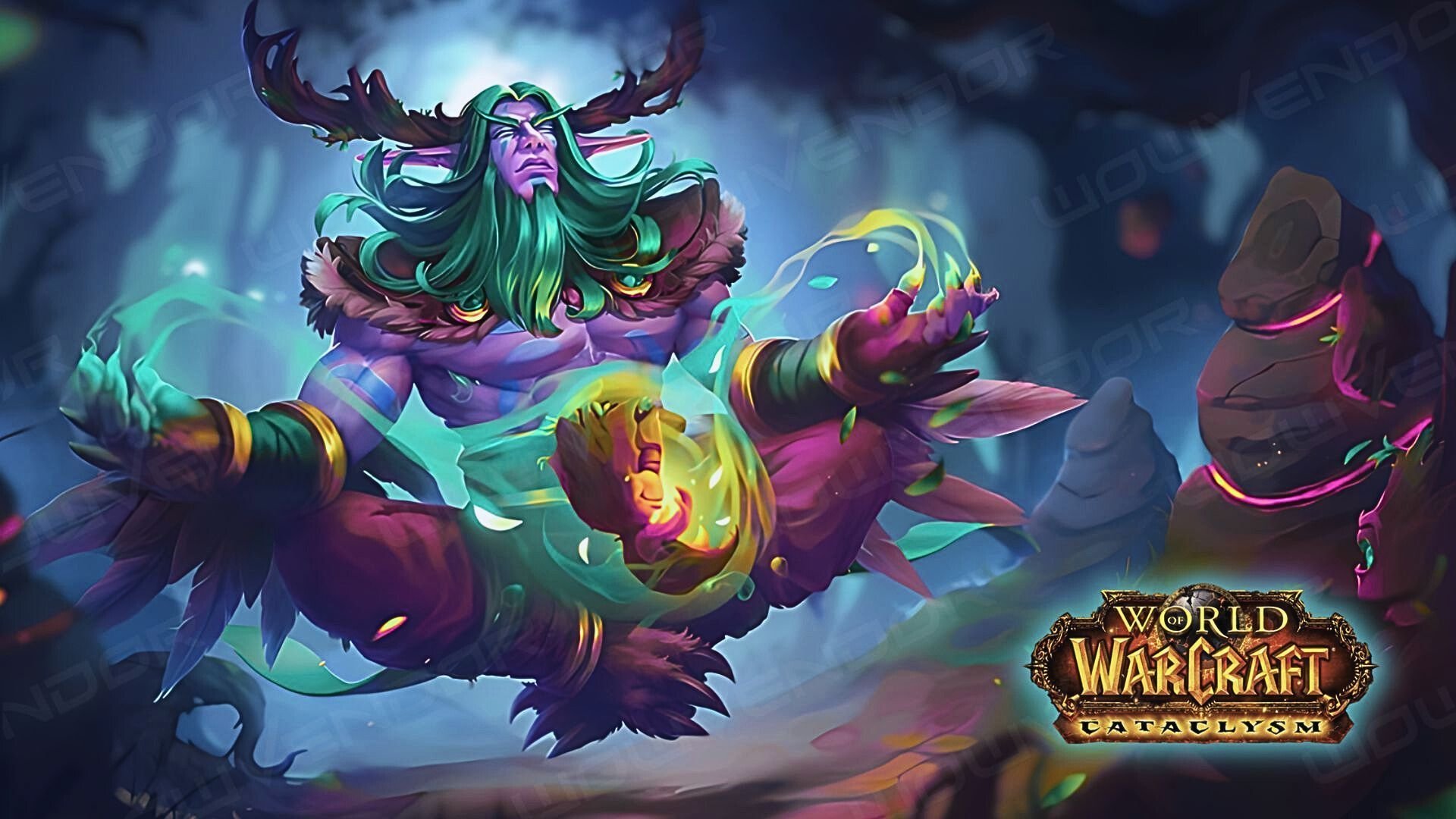
Table of Contents
- Cataclysm Classic Balance Druid PvE Guide: Talents
- Cataclysm Classic Balance Druid PvE Guide: Glyphs
- Cataclysm Classic Balance Druid PvE Guide: Races
- Cataclysm Classic Balance Druid PvE Guide: Gear
- Cataclysm Classic Balance Druid PvE Guide: Professions
- Cataclysm Classic Balance Druid PvE Guide: Gear Selection
- Cataclysm Classic Balance Druid PvE Guide: Casting Mechanics
- Cataclysm Classic Balance Druid PvE Guide: Spell Rotations
- Cataclysm Classic Balance Druid PvE Guide: Mods and Tools
- Conclusion
This is a compendium of information on raiding as a Balance Druid. This Cataclysm Classic Balance Druid PvE guide contains everything a beginner needs to achieve basic competence at raid DPS, as well as more detailed discussion for people more interested in understanding the theory or more advanced play.
Cataclysm Classic Balance Druid PvE Guide: Talents
Any PvE Balance spec will include the following talents:
- Nature’s Grace: You gain 15% spell haste after you cast Moonfire, Regrowth, or Insect Swarm, lasting 15 sec. This effect has a 1 minute cooldown. When you gain Lunar or Solar Eclipse, the cooldown of Nature’s Grace is instantly reset.
- Starlight Wrath: Reduces the cast time of your Wrath and Starfire spells by 0.15 sec.
- Nature’s Majesty: Increases the critical strike chance with spells by 2%.
- Genesis: Increases the healing done by your periodic spells and by Swiftmend by 2%, and increases the duration of your Moonfire and Insect Swarm by 2 sec.
- Balance of Power: Increases your Nature and Arcane spell damage by 1% and increases your spell hit rating by an additional amount equal to 50% of any Spirit gained from items or effects.
- Euphoria: While not in an Eclipse state, you have a 24% chance to double the Solar or Lunar energy generated by your Wrath or Starfire when they deal damage. This effect cannot occur when you need less than 65 energy to reach one end of the Eclipse bar. When you reach a Solar or Lunar eclipse, you instantly are restored 16% of your total mana.
- Moonkin Form: Shapeshift into Moonkin Form, increasing Arcane and Nature spell damage by 10%, reducing all damage taken by 15%, and increases spell haste of all party and raid members by 5%. The Moonkin can not cast healing or resurrection spells while shapeshifted. The act of shapeshifting frees the caster of movement impairing effects.
- Typhoon: You summon a violent Typhoon that does 0 Nature damage to targets in front of the caster within 30 yards, knocking them back and dazing them for 6 sec.
- Shooting Stars: You have a chance when you deal damage with your Moonfire or Insect Swarm to instantly reset the cooldown of your Starsurge and reduce its cast time by 100%. Lasts 12 sec.
- Gale Winds: Increases damage done by your Hurricane and Typhoon spells by 15%, and increases the range of your Cyclone spell by 2 yards.
- Dreamstate: When you cast your Innervate on yourself, you regain an additional 15% of your total mana over its duration.
- Force of Nature: Summons 3 treants to attack enemy targets for 30 sec.
- Sunfire: Burns the enemy for 0 Nature damage and then an additional 0 Nature damage over 12 sec.
- Earth and Moon: Your Wrath, Starfire and Wild Mushroom: Detonate spells apply the Earth and Moon effect, which increases spell damage taken by 8% for 15 sec. Also increases your spell damage by 2%.
- Starfall: You summon a flurry of stars from the sky on all targets within 40 yards of the caster that you’re in combat with, each dealing 0 Arcane damage. Maximum 20 stars. Lasts 10 sec. Shapeshifting into an animal form or mounting cancels the effect. Any effect which causes you to lose control of your character will suppress the starfall effect.
- Natural Shapeshifter: Reduces the mana cost of all shapeshifting by 10% and increases the duration of Tree of Life Form by 3 sec.
- Heart of the Wild: Increases your Intellect by 2%. In addition, while in Bear Form your Stamina is increased by 2% and while in Cat Form your attack power is increased by 3%.
- Master Shapeshifter: Grants an effect which lasts while the Druid is within the respective shapeshift form. Bear Form – Increases physical damage by 4%. Cat Form – Increases critical strike chance by 4%. Moonkin Form – Increases spell damage by 4%. Tree of Life/Caster Form – Increases healing by 4%.
That leaves 8 points, 4 of which must be in the Balance tree, mostly up to you. Options for these talents:
1) Mana. Generally, mana is only a concern where you use Hurricane or Moonfire (without Lunar Shower) frequently. Even then, Dreamstate should cover your mana needs. It’s unlikely you’ll need more mana than that, but if you do, Furor is better than Moonglow.
2) Another utility. Solar Beam (silence), and Fungal Growth (snare) can have uses at various encounters.
3) Lunar Shower. This talent significantly improves the damage and efficiency of repeat Moonfire casts, but at the cost of energy usage. In situations where you’re spamming Moonfire (generally due to movement), you want the talent due to the DPS boost. But in general you work hard to avoid having to spam like that, and the talent also makes Eclipse control harder. Usually you will work without it.
4) Filler. If you don’t need any of the above. Owlkin Frenzy is some DPS contribution depending on encounter. Perseverance is a fine raid talent, especially when learning Heroics and more dangerous encounters.
Cataclysm Classic Balance Druid PvE Guide: Glyphs
Prime Glyphs
The best two are Glyph of Insect Swarm and Glyph of Moonfire. The third will usually be Glyph of Wrath. However, Glyph of Starsurge can be strong in a fight where Starfall is regularly used on cooldown on multiple targets. Even on a single target, it sometimes lets you line up every Starfall with a Lunar Eclipse, which is good for DPS (depends on haste and amount of movement). In these situations where Starfall is very strong, use Starsurge as your third Glyph.
Major Glyphs
Glyph of Starfall is a solid DPS increase. Glyph of Rebirth is also highly recommended in any raid situation-being able to Rebirth people safely is very valuable to your raid (especially with the new system of limited Rebirths).
The others are all situational:
- Glyph of Thorns is useful anytime Thorns is good (see below).
- Glyph of Focus gives a little bit of DPS anytime you don’t need the extra range on Starfall. Sometimes the reduced range can also help you control your Starfall targets.
- Glyph of Solar Beam is useful at any encounter where you have to interrupt spells (despite the tooltip, the Glyph extends the lockout effect, not the silence aura).
- Glyph of Innervate can be a filler Glyph, but Moonkin rarely have mana problems in raids (and when we do, we’re likely to Innervate ourselves for Dreamstate).
Minor Glyphs
None of these add any DPS, so it’s entirely up to personal taste:
- Glyph of Typhoon is the only one that affects combat mechanics, but it’s situation-dependent.
- Glyph of Unburdened Rebirth can prevent you from being embarrassed with no reagents, and saves an inventory slot to boot.
- Glyph of Dash can occasionally be handy.
- Glyph of the Wild can save a little bit of mana if you ever have to rebuff people during a fight, but MotW is very cheap now.
Cataclysm Classic Balance Druid PvE Guide: Races
Horde
- Troll is best for DPS, since it gives Berserking and Beast Slaying.
- Tauren gives no DPS benefit.
Alliance
- Worgen is best for DPS, since it gives 1% crit (Darkflight is also a nice perk).
- Night Elf gives no DPS benefit.
Cataclysm Classic Balance Druid PvE Guide: Gear
Stats
In roughly descending order of importance.
Intellect:
Intellect provides 1 spellpower and 0.00154% to crit per point. With Mark of the Wild, Heart of the Wild, and Astral Leather Specialization, it provides 1.169 spellpower and 0.0018% crit (555 points per 1% crit, a bit under 1/3 of a crit rating).
Similarly, with these talents, one point of Intellect increases your maximum mana by 17.53, and your regen from Replenishment, Euphoria, and Innervate correspondingly.
These things together make Int the best stat for both DPS and mana.
Spellpower:
Intellect, without the talent bonuses, crit bonus, or mana gains. Basically a weaker form of Intellect that only appears on weapons and trinkets, but is still good.
Hit rating/Spirit:
102.45 hit rating gives 1% to hit with spells, up to the cap of 1742 rating against a level 88 target. With Balance of Power, 1 Spirit and 1 hit rating are identical for gear selection purposes (if you ever play Resto at all you probably want to gem Spirit).
Along with haste, hit is one of the best DPS stats. Remember that hit rating over the cap of 1742 does nothing, so you need to reforge hit to other stats if your gear has more than this amount (see below).
Haste rating:
128.05 haste rating gives 1% spell haste. Again a solid DPS stat. Along with hit, generally a stat you want to look for on gear. Haste adds extra DoT ticks at certain points (depending on which buffs you have up); WrathCalcs can compute them.
Mastery rating:
89.64 mastery rating adds 1% to our Eclipse bonus. Because only about 60% of our spells are cast during Eclipse, this makes it weaker than haste rating, point-for-point.
Critical strike rating:
179.28 crit rating gives 1% to crit. With Moonfury and a Chaotic Skyflare Diamond, crits with most of our main spells do 2.09 times the damage of non-crits. Because of the poor rating conversion on crit, it winds up as our worst secondary stat.
The stat priority can be briefly summarized as:
Int >> haste > hit/Spirit* = mastery > crit
More details on overall gear strategy at the end of this section.
*The actual per-point value of hit rating is largely irrelevant, as you always gear/reforge to as to remain hit capped. Therefore the effective value of hit/Spirit on gear is equal to whatever stat you reforge in/out of to maintain your hit cap, and in practice this is usually mastery.
Gems
Gem Burning Shadowspirit Diamond in your meta socket.
Gem Brilliant Inferno Ruby in all red/prismatic sockets, and in any blue/yellow socket where the bonus is worse than 20 Int (this is a good guideline-you can always use WrathCalcs to check in detail whether a socket bonus is worth it).
In blue/yellow sockets where the bonus is 20 Int or better, use Purified Demonseye or Reckless Ember Topaz.
Set Bonuses
All of our T11 (Stormrider’s Regalia) and T12 (Obsidian Arborweave Regalia) set bonuses are good enough to be worth using if you have access to them. Upgrade smoothly from 4-piece T11, to 2 T11 + 2 T12, to 4 T12.
The 4-piece T13 is unusually weak, so upgrading is not a priority. At equal quality (Heroic/Normal), T13 will still be an upgrade over T12 due to the ilvl bump. Don’t rush to break your T12 bonuses though, especially at a quality downgrade. Use the spreadsheet for exact comparisons.
Trinkets
Most trinkets can be evaluated based on their stats just like any other item, if you use the uptime on their proc/use to compute an average stat value. WrathCalcs can also help you evaluate trinkets.
(fill T13 trinkets once there is further analysis)
The best trinket currently available is Variable Pulse Lightning Capacitor. After that, Necromantic Focus and Darkmoon Card: Volcano are similar, potentially depending on your current haste.
Rune of Zeth, and Fiery Quintessence are close behind. Note: the ranking can vary greatly with haste, as some trinkets have passive haste after reforging that can push you to DoT breakpoints. The main point of VPLC and either Focus or Volcano being BIS should hold, but I’d always check WrathCalcs to compare other trinkets in detail for your current gear. These trinkets are all better than the T11 trinkets Heart of Ignacious and Theralion’s Mirror.
Mirror of Broken Images is quite useful in many PvE encounters. Macroing it to Barkskin is the easiest way to use it.
Finally, Sorrowsong can be surprisingly good at certain raid encounters. It will proc if you hit any low-HP adds, and so it can be extremely good if an encounter has frequent add spawns. In addition, it’s obviously worth using at any encounter where the most important DPS requirement is a final burn phase (it may be best for your raid, even if not best for your damage meters).
Activated Trinkets
Typically the best time to activate is with your DoT’s. Not only does this ensure you get a set of buffed DoT’s, but you often refresh DoT’s at the beginning of Eclipse. Even better, if it’s a 20 second buff (like many are), your 18 second DoT’s should get a second set of refreshes during the trinket activation. So, macroing trinkets to IS is not a bad plan if you don’t want to deal with them manually all the time (as you’ll see below in the DoT’s section, you generally refresh IS first).
Here’s a macro you can stick into any spell (such as IS) to activate a trinket without spamming error messages or sounds:
/script UIErrorsFrame:UnregisterEvent("UI_ERROR_MESSAGE");
/console Sound_EnableSFX 0
/use 14
/console Sound_EnableSFX 1
/script UIErrorsFrame:RegisterEvent("UI_ERROR_MESSAGE");(14 is the bottom trinket slot, 13 is the top. Make sure to put these lines before the spell cast in your macro.)
Consumables
Use Flask of the Draconic Mind or a Cauldron of Battle. Similarly use a 90 Int food (such as Severed Sagefish Head) or a Seafood Feast.
The best DPS potion is Volcanic Potion. You want to use it during Bloodlust. When you’re trying to completely maximize your DPS, remember you can click a potion just before combat starts (ask your tank to count down), and then be able to use another potion later in the fight.
Enchants
Excluding profession bonuses.
- Head: 60 Int/35 crit (Guardians of Hyjal revered).
- Shoulders: 50 Int/25 haste (Therazane exalted).
- Back – 50 Int
- Chest – 20 stats
- Wrists – 50 Int
- Gloves – 50 haste
- Legs – 95 Int/55 Spirit (Powerful Ghostly Spellthread)
- Boots – Run speed/35 mastery
- Weapon – Power Torrent
- Offhand – 40 Int
Advanced players may occasionally use other options such as Mastery on gloves and Haste on bracers, to craft their stats very exactly around a haste breakpoint.
Cataclysm Classic Balance Druid PvE Guide: Professions
Tailoring is slightly better than other professions: Lightweave Embroidery gives 580 Int for 15 seconds, 20% proc on spellcast, 60 second cooldown. The average benefit is around 140 Int, minus the 50 Int you usually have on your cloak, for an increase of around 90 Int.
Beyond that, most professions provide equal gains.
- Engineering: Synapse Springs give 480 Int, for 10 seconds out of every 60, for 80 Int on average (varies slightly in practice).
A macro similar to the one given above for trinkets can be used for glove tinkers–the glove slot is number 10.
- Leatherworking: 130 Int to bracers in place of the usual 50 Int gives you 80 Intellect.
- Blacksmithing is similar. An extra socket each in your wrists and gloves, each with a Brilliant Inferno Ruby, gives 80 Intellect.
- Alchemy: Mixology (with your Flask of the Draconic Mind) will give you 80 Intellect.
- Enchanting: 40 Int to each ring gives 80 Intellect.
- Inscription: 130 Int/25 haste to shoulders in place of the Therazane enchant gives 80 Intellect.
- Jewelcrafting: 3 Brilliant Chimera’s Eye in place of 3 Brilliant Inferno Ruby gives 81 Intellect.
The remaining professions are weaker:
- Herbalism now gives a haste cooldown via Lifeblood. At 480 haste for 20s every 2 minutes, it averages out to 80 haste.
- Skinning gives 80 crit rating.
- Mining provides minor survivability benefits, but no DPS gain.
Cataclysm Classic Balance Druid PvE Guide: Gear Selection
General Principles
I’m not going to set out full BIS lists here, for a few different reasons. It’s best for you to read this guide until you understand the class well enough to choose gear based on the things I’ve said above. But here’s some overall advice to help provide some guidance.
Caster epics have Intellect, Stamina, spellpower in the case of weapons, and 2 out of the 5 secondary stats: crit rating, hit rating, haste rating, mastery rating or Spirit. Keep in mind a few rules of thumb, which are enough to get a quick estimate of the value of any piece:
- Higher-ilvl gear is stronger. Intellect usually increases very regularly with ilvl, so we have a predictable gain.
- More sockets are better (since they allow us to stack more Intellect, primarily).
- As far as secondary stats, gear so as to maximize haste. Your next best stats after that is Spirit/hit or mastery (these are interchangeable due to reforging). Therefore, Spirit/haste (or hit/haste) and haste/mastery items are the best.
- When picking items, don’t worry about being over or under the hit cap–that will be addressed in reforging.
Since the 5% Intellect from Leather Specialization is a strong bonus, you should generally ignore cloth gear.
To compare items more precisely and check for upgrades, use WrathCalcs to test different setups. You can also use WrathCalcs to compute DPS weights for all your stats for guidance. Generally though, the above rules are sufficient to figure out which of two items is better. See below for more on WrathCalcs.
Optimizing Gear, Gems, Enchants, and Reforges
Given all of the options we have for shuffling stats around now, it can be confusing to find the optimal way to select gear and gem/reforge it while remaining at the hit cap. Computational optimizers like Rawr can assist with this, but knowing the basic guidelines can save you a lot of time when going over your options. It’s best to mock up your setup in WrathCalcs and decide how you want to gem/reforge, and then actually do it all at once on live servers.
This is a basic way to approach reforging that covers most situations:
1) In each slot, put on your best individual item (see above), ignoring the hit cap. This will generally be your highest-ilvl leather spellpower item, preferring haste items and set bonuses where possible.
2) Gem in the way described above.
If you are under the hit cap of 1742, do the following until you hit 1742:
3A) On any crit/haste or mastery/haste pieces, reforge the crit or mastery to hit or Spirit (you may prefer Spirit so you can use your items for Resto spec as well).
4A) Reforge any other pieces. Remember that you can reforge hit onto an item with Spirit, and vice versa.
If you were over the hit cap of 1742, do the following until you’re just over 1742:
3B) Reforging hit/Spirit to haste on any non-haste items.
4B) Reforging hit/Spirit to mastery on any haste items.
5) Once you are at hit cap, if you have any unreforged items that don’t have haste, reforge the crit or mastery on them to haste.
6) There’s some possible further optimization by reforging crit/mastery to hit on some items and reforging back on others, or by changing between red and purple gems, but at this point you’ll have to work it our yourself or resort to automated tools.
Cataclysm Classic Balance Druid PvE Guide: Casting Mechanics
The first rule of DPS is to always be casting (or waiting out a GCD after an instant). Anytime a spell ends, you should already have queued your next one (see below). Don’t delay a cast to make a decision or react to proc–train yourself to start another spell regardless of what’s going on, and change the subsequent spellcast if necessary after you’ve had another second to think.
As a preliminary note, this type of macro might be useful for automatically assisting with your nukes when you have a raid member targeted:
#showtooltip
/use [@target, harm, nodead][@targettarget, harm, nodead][] StarfireSpell Queueing
First, recall that the client processes events when you release the key. Keep that in mind for learning your timing. Some mods have options to change this if you like.
Cataclysm introduces a new ability queueing system, similar to the single-spell queue in WLK but more consistent and more customizable.
When you send a spell command to the server, if your character is unable to cast immediately (typically because it’s still casting or GCD-locked from your last spell), the server will see if you become ready to cast within a certain short window. If you do, it will begin the cast immediately. You can set the length of this window with an interface option called “Custom Latency Tolerance.” You want to set this value to a high enough amount that you can always press the next spell key comfortably before the current spell finishes, and never have a gap between casts. But you don’t want to set it too high, because you can’t change your mind after you queue a spell, so your reaction time is effectively slower if you “lock in” each spell a long time before it begins casting. Experiment and find something you’re comfortable with.
Cataclysm Classic Balance Druid PvE Guide: Spell Rotations
The Short Version
- Start by applying Insect Swarm and Moonfire, and casting Starsurge. Whenever either DoT falls off the target, or Starsurge comes off cooldown, recast it.
- Cast Starsurge until a Solar (Wrath) Eclipse procs, then switch to Wrath. Cast Wrath until a Lunar (Starfire) Eclipse procs, then switch back to Starfire.
- Repeat this Eclipse cycle, always keeping your two DoT’s on the target and using Starsurge, Starfall and Force of Nature on cooldown.
For more detail, continue to the following sections.
The Eclipse Rotation
You will generally operate in a four-step cycle.
- Pre-Lunar. Cast Wrath until the Eclipse buff appears (have some mod that will make it very obvious when you gain the buff).
- Lunar Eclipse. When you see the buff, finish casting your current Wrath and then cast Starfire for the duration of Eclipse.
- Pre-Solar. When Eclipse fades, continue casting Starfire until the Eclipse buff appears.
- Solar Eclipse. Cast Wrath for the duration. Continue casting when it ends to loop back around into step 1.
Basically, you cast Wrath until Lunar procs and cast Starfire until Solar procs. But once DoTs and other instants are involved, thinking in terms of the four-phase cycle helps you plan your casts well.
Subtleties of Transitions
Solar: You want to watch for when your Solar energy is at 80 or higher, so that you know your current Starfire cast is your last one, and queue a Wrath.
Lunar: Since Wrath gives its Eclipse energy upon landing, it’s a bit trickier to time the swap to Starfire correctly. If your Lunar energy as you start a Wrath is 74 or higher, it will be your last Wrath (because the one in the air will give 13 energy when it lands).
Do your best to avoid casting extra spells beyond what’s necessary to proc Eclipse.
If you use the mod Balance Power Tracker (below) things look slightly different. That mod can display a modified energy bar, which projects your energy value from currently casting/traveling spells, so all you have to do is check for when it reads 100. Remember that if you move or interrupt a cast though, your energy will appear to go back down.
Managing Eclipse
When you die, your Eclipse bar is reset to 0. So on learning attempts for any boss, you’ll get used to starting from 0 energy. As you attempt a particular fight more and more, you can sometimes plan out your Eclipses for certain AoE/movement phases. I’m not going to give a boss-by-boss guide here, but you should pay attention to the order of events in each fight and refine your routine. An important point is that you always have one nuke you can cast (Starfire or Wrath) that doesn’t move your Eclipse bar, so sometimes you can use that to control when you enter or leave Eclipse at various points in an encounter.
At some encounters, planning out your Eclipses at specific points in the fight will be a major part of doing good DPS. Most commonly, when a fight has AoE phase, you will want to do whatever is necessary to make sure you are in Solar when that phase begins, by delaying Eclipses as necessary.
When you’re not wiping, you can start boss fights at 100 energy with a freshly proceed Eclipse. As you get near the end of the trash, go to the end of the Eclipse bar and stay there (by stopping Wrath/Starfire usage). During trash itself, where you’re often going to be using DoT’s and AoE spells, you can simply sit in Solar and use the Sunfire-based style (see below).
DoT Refreshing
Compared to WLK, our DoT’s are far stronger now. You want to do your best to maintain very high uptime on both of them. Typically, the only time you will hold up recasting of a DoT is if it falls off and the corresponding Eclipse is coming up very soon–you’ll wait one or two casts and refresh at the beginning of Eclipse. If both DoT’s are coming up at around the same time when you start Eclipse, remember that Nature’s Grace will only affect the second one, so you want to remember to use Insect Swarm first (because Moonfire/Sunfire is stronger than IS under either Eclipse).
Cataclysm changed the way DoT refreshing works–when you refresh a currently ticking DoT, you no longer waste a partial tick. Significantly, if you refresh a DoT when it has only one tick remaining, there is no loss at all. This means the optimal time to refresh a DoT is during its last tick, thereby maintaining true 100% uptime. Failing that, refresh at the same time you do now, as soon as it falls off. Note: since Moonfire and Sunfire are two different debuffs, we can’t benefit from the new DoT system when replacing one with the other. In that case you should wait for the old Moonfire/Sunfire to fall off.
DoT ticks use your spellpower, haste, and +% damage (e.g. Eclipse) values from the moment the DoT was cast–they do not update in real time until the next time you cast the DoT. Crit chance of the ticks, on the other hand, does change dynamically if you gain or lose crit buffs while the DoT is ticking. Because the entire DoT is affected by your stats at the moment of cast, there can be detailed decision making in when to apply them–see “Advanced Points” below for more.
Starsurge
Similarly to DoT’s, simply use this on cooldown or any time Shooting Stars procs. As with DoT’s, the only notable exception is if it would be the last spell before Eclipse. Then you can hold it up for one spell to cast it with the Eclipse buff.
It’s possible that the 4-piece tier 12 set bonus will make it beneficial to stop casting Starsurge when outside of Eclipse. I’ll update this when we work it out in more detail.
Other Spells
- Starfall: If possible, cast this at the beginning of Lunar Eclipse. But depending on your haste and other factors, your cycle might be too short to use Starfall during Lunar each time. In that case, use it on cooldown. In fights which occasionally have multiple targets up at once, save Starfall for those times. With the tier 11 4-piece bonus, try not to have Starfall up when you gain an Eclipse, because it will immediately consume the buff.
- Force of Nature: use this as many times as possible in a given fight. If you know when Bloodlust/Heroism is coming, try to cast this immediately beforehand (but not if this requires waiting so long that you can’t use it as many times during the encounter). There’s no special benefit for having a spellpower buff active at the moment you cast this; the Treants’ attack power changes dynamically with your spellpower. This macro is handy:
/use Force of Nature
/petattackThis way, while your Treants are out, you can just press your FoN button again to make them attack your current target.
- Thorns: This spell can do good damage. At around 15 procs per cast, it starts to become worth casting on cooldown. In situations where any tank is tanking multiple mobs, you will definitely want to use this on cooldown and probably Glyph it as well. Note that it is expensive, so you have to be careful if you’re planning to use it heavily. Here’s macro to cast it on your target if friendly, otherwise on the target’s target (useful if you’re targeting the boss and want to cast Thorns on the tank):
#showtooltip
/use [@target, help, nodead][@targettarget, help, nodead][@mouseover, help, nodead][] Thorns(The mouseover part is mostly there for Resto purposes, but could still be handy).
- Typhoon: With Wild Mushroom and DoT’s providing stronger AoE options, the main reason you use this is for the knockback. Occasionally it’s useful in a raid encounter to spend a GCD pushing something away. For this it must be unglyphed. If you do ever want to use it for any DPS reason, make sure to Glyph it.
- Faerie Fire: We no longer need to use this unless the raid is missing an Armor debuff.
- Innervate: You will generally cast this on yourself on cooldown now, as there’s little reason to cast it on anyone else. If you’re relying on Dreamstate to sustain mana in a given encounter, make sure to cast Innervate when you have a large mana pool due to Int procs. In particular, the Darkmoon Card: Volcano proc is a large boost, as is your Volcanic Potion.
- Rebirth: The most important issue is to avoid wasting it, especially now that the raid can only use a limited number per attempt (3 in 25-man, 1 in 10-man). First, make sure to coordinate with other Druids in your raid using macros or Vent so two of you don’t cast on the same target. Second, people love to accept the resurrection as soon as it appears and die to something immediately. It can be good to warn them if it’s a bad time to accept, and Glyph of Rebirth provides further insurance. Remember that Rebirth drops Moonkin Form, so be ready to reshift as your next cast.
Here’s a macro that casts Revive instead of Rebirth if you’re out of combat, and also alerts your raid if Rebirth is used:
#showtooltip
/use [nocombat] Revive
/stopmacro [nocombat]
/use Rebirth
/ra Rebirth on %t- Tranquility: This spell does quite a large amount of healing due to our high spellpower (only slightly less than that of a Resto Druid). Don’t forget to use it at some point during the fight when the raid has taken a lot of damage.
Bloodlust and Heroism
With the WLK haste cap issues gone, our spells are now all buffed nicely by Bloodlust. Nothing significant will change during the rotation, except that DoT’s are exceedingly good. Make sure to DoT any possible target as soon as Bloodlust starts, probably even clipping any existing DoT’s at that point (use any timers here if possible, such as Berserking and your Volcanic Potion). If you have a Nature’s Grace near the beginning of Bloodlust, even better to spam DoT’s with.
Movement
The basic solution to any movement situation is to try to get the most out of DoT’s and Lunar Shower. Cast Moonfire the instant movement begins (or even just before) to start stacking the buff, then spam it on the target while running. Use IS, Wild Mushroom, and any other instants you have available (such as Shooting Stars) as well. Planting Wild Mushrooms at the enemy’s feet while moving takes some practice but is worthwhile; remember that you can wait until your next Solar Eclipse to detonate them.
Finally, if at all possible, you want to be in an Eclipse for movement, although you might often have little control over this. With Lunar Shower, the Moonfire spam can also build energy towards your next Eclipse, only if that Eclipse is Solar (this asymmetry will hopefully be fixed at some point).
It’s important to manage our DoT’s well during high-movement situations. You want to plan your casting so that you cast DoT’s (or other instants) while moving, and nukes while standing still. This requires you to be highly aware of both your spell rotation and your surroundings, so you can anticipate movement. It’s always worth delaying a DoT by a few seconds to cast it while moving, so you can cast another nuke while still. This also holds true for other instants.
Multiple Targets and AoE
In multi-target (3 or more) situations, Wild Mushroom and DoT’s tend to overpower all other spells due to their high DPET.
- Wild Mushroom should always be used on cooldown against clumped targets (i.e. plant a set of 3 Mushrooms and detonate them every 10 seconds). Remember that the detonation is off the GCD, so you want to hit it at the same time as some other instant rather than pausing.
- Always put both DoT’s on any target that’s going to live for more than a few seconds.
- Save Starfall for multi-target situations if there are any in the encounter.
- Hurricane and Typhoon have little use for DPS right now, since you can basically fill your time with Wild Mushroom and DoT’s.
- Since all of the above spells are instant, you can move continuously while doing all this (it takes a little bit of practice). This keeps Lunar Shower stacked, while slightly increases the DPS of any Moonfire casts and makes them much more affordable.
You want to be in Solar if possible for AoE phases. On encounters with a major AoE component, a big part of your planning should revolve around being in Solar Eclipse at the right time, due to the importance of Wild Mushroom.
If you have Lunar Shower and try to cast more than 14 consecutive Sunfires, your Eclipse will end, severely curtailing the DPS of your instants. In a situation where you would want to spam instants for more than 15 seconds, alternate Sunfire and Insect Swarm and add in frequent Wild Mushrooms. If the multi-DoT situation lasts more than 30-40 seconds, you have a few options:
- Make sure to periodically let Lunar Shower fall off by casting 3 consecutive Mushrooms.
- Occasionally fill time with a Hurricane.
- Drop the Lunar Shower talent. This is a drastic measure, since, as just discussed, there are ways of managing the energy problem. Moreover, if you try to spam Sunfire without Lunar Shower for a whole minute, you will use a huge amount of mana. It’s possible that certain encounters will make this the best solution, however.
Advanced Techniques
The Balance spec in Cataclysm has a number of interacting buffs and procs, making it currently one of the more complex classes in the game to play well. There’s no concise list of rules for what to cast and when (which is part of why this guide is so long); you need to have a solid understanding of how the different abilities work and use your judgment in a variety of situations. When you feel you’ve mastered the basic techniques described so far, here are more subtle points you can try to start working into your play:
- If you queue an instant spell after the final Wrath/SF that procs an Eclipse, that instant will not be affected by the Eclipse. So if you want to refresh DoT’s at the beginning of an Eclipse, you have to cast one other spell first.
- Corollary: if you queue a Starsurge at that point, it will be affected by Eclipse unless it’s instant cast. So be careful with Shooting Stars procs around the beginning of Eclipse. This is especially important with the tier 11 4-piece bonus, as you don’t want to use your first guaranteed crit on an uneclipsed Starsurge. It’s often quite good to hold your Starsurge cooldown or an SS proc into the beginning of a new Eclipse, just keep this in mind if you do.
- Similarly, if you queue an instant spell after the last spell of an Eclipse (i.e. the spell that takes you past 0), the instant will also be Eclipsed. You can use this to refresh DoT’s as Eclipse ends, or even cast an instant Starsurge. If that last spell is Wrath or Starsurge, you can sometimes get two extra instants off, depending on travel time.
- There are a wide variety of things that affect the damage done by a DoT at the time you cast. A non-exhaustive list: Nature’s Grace, Eclipse, trinket procs, Lightweave/Synapse/Power Torrent, Bloodlust, Volcanic Potion, Berserking. Depending on you closely you monitor your buffs (there’s no way you can watch all these things effectively without a mod organizing your buff information), you can squeeze out extra DPS by watching what’s going on as you refresh DoT’s, and adjusting slightly earlier or later as necessary.
- This also means that if you’re moving, sometimes you don’t want to use the usual Lunar Shower spam because it will overwrite a strong DoT with a weak one (for example if Eclipse just faded). This is the sort of situation where you might plant Wild Mushrooms to fill time for 3 GCD’s, and detonate them at any later time (e.g during Solar).
- Glyph of Starfire further complicates DoT refreshing. If you have it equipped, any Starfire will cause the number of ticks on your current Moonfire to be recomputed based on your current haste. This means that, among other things, it’s no longer important to try to cast Moonfire with Nature’s Grace up (since further Starfires will apply it anyway). So during Lunar Eclipse you should reverse the usual DoT order and refresh Moonfire before Insect Swarm.
- From a reset Eclipse position, Starsurge will give Solar energy. Keep this in mind when planning your first few casts of the fight, to make sure you start cleanly towards whichever Eclipse you want first (which Eclipse this is depends on your plan for the fight). A solid starting routine is important, because you have your Volcanic Potion, first set of trinket procs, and often Bloodlust, and want to maximize their effect. Pay particular attention to DoT refreshing.
- The 4T11 bonus constricts your use of Starfall and Moonfire, since you want to avoid using up charges on either. Be especially careful not to Starfall near the beginning of a new Eclipse. Conversely, you might hold your Starsurge cooldown for many seconds to start an Eclipse with a crit Starsurge.
- The 4T11 bonus allows a particular trick with Wild Mushroom. If you detonate a set of Mushrooms with the Astral Alignment buff up, all of the hits will be affected by the current number of charges (i.e. the crit bonus applies before the charges are used). By carefully planning an Eclipse (ideally Solar) to start right before you use a set of Mushrooms, you can do a large burst of AoE damage with a crit bonus on the detonation.
Cataclysm Classic Balance Druid PvE Guide: Mods and Tools
- SquawkAndAwe: A convenient set of bars for all Moonkin-related timers.
- Balance Power Tracker: Among various display features, this bar has the option to add the expected energy from currently casting/traveling spells to your energy bar, to help you see when you need to swap spells for the next Eclipse. Try this feature out to see if you like it, but remember that if you’ve been practicing with the default energy bar, the timing change will take a bit of getting used to.
- Quartz: as a primary caster, you should have a proper cast bar. This is an excellent one.
- Rawr is up and running for level 85, I believe, but I’ve not played with it yet.
Conclusion
Thanks for checking out our Cataclysm Classic Balance Druid PvE Guide. If it has been useful to you during your travels through Azeroth, please don’t hesitate to let us know!

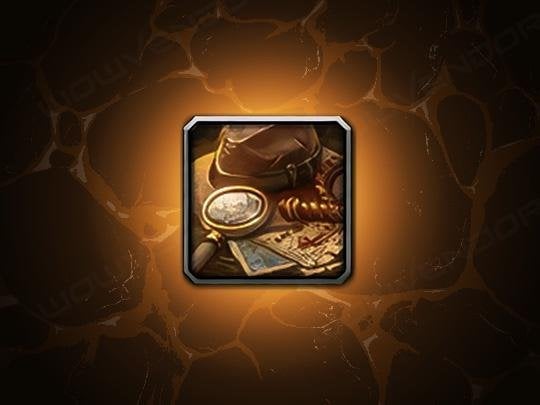

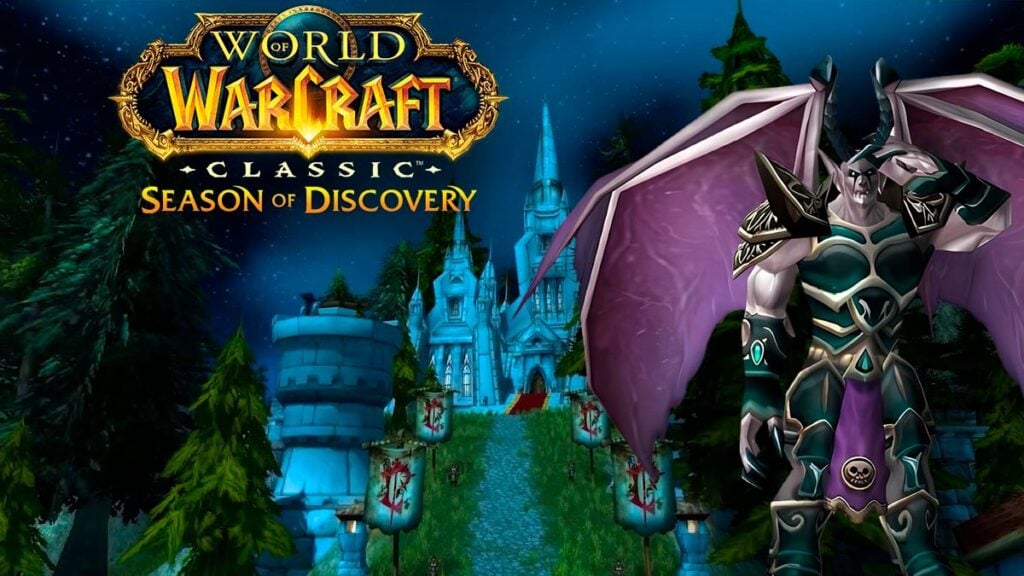
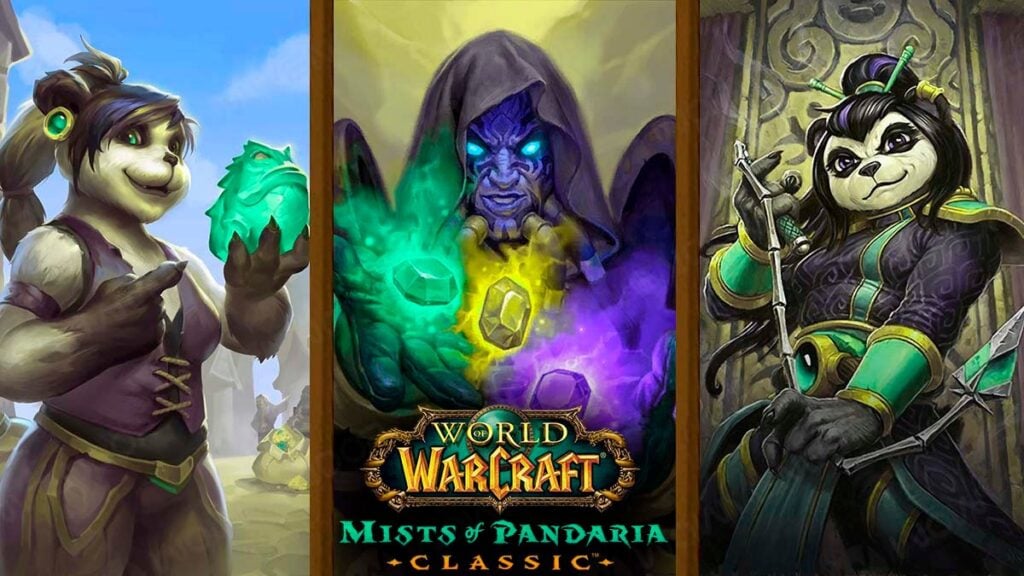
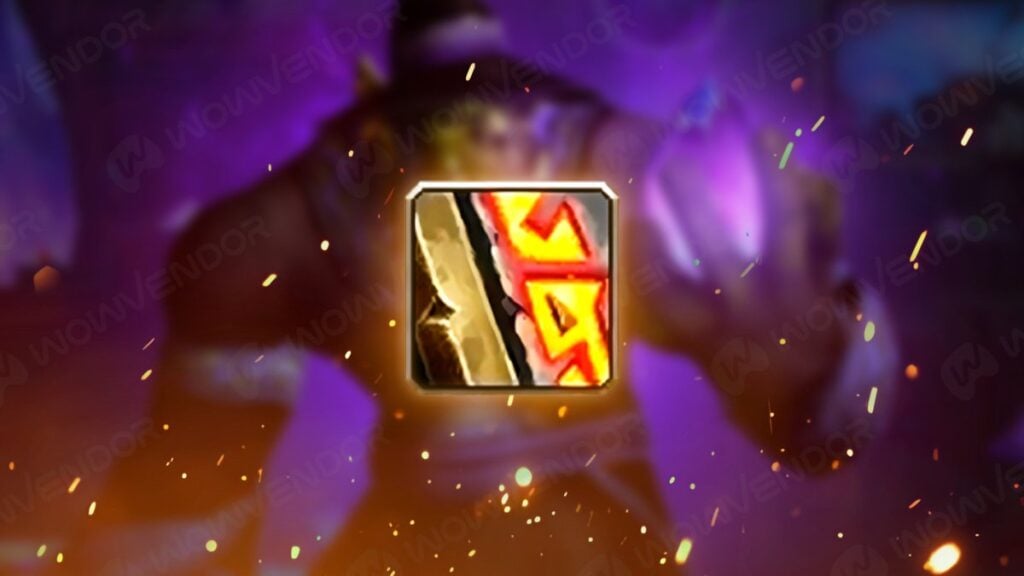
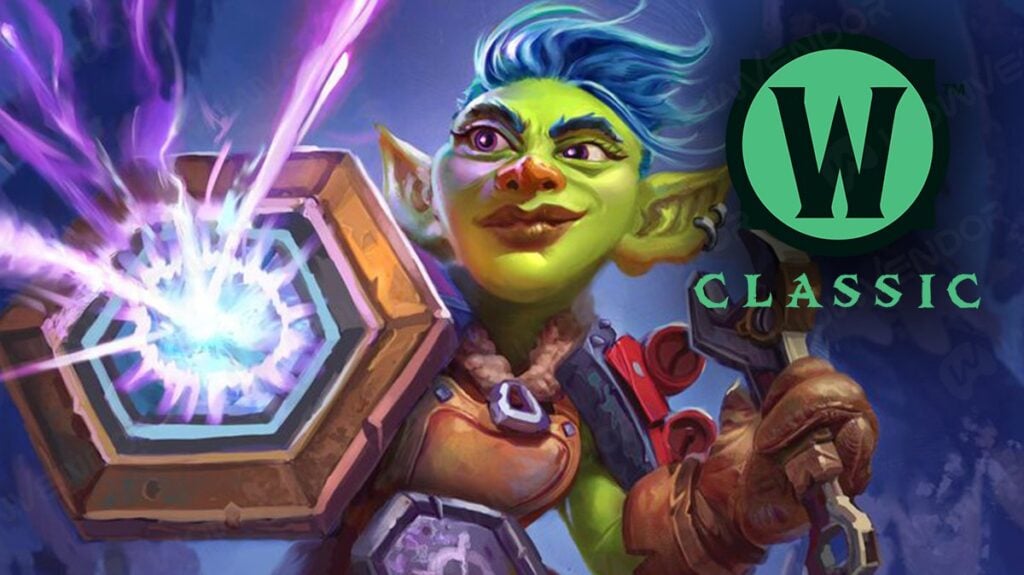

Comments
Excellent guide for Cata Classic! Thanks